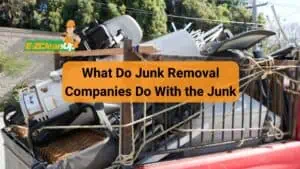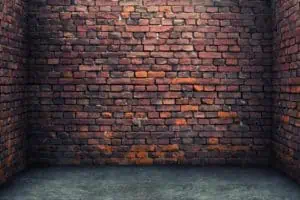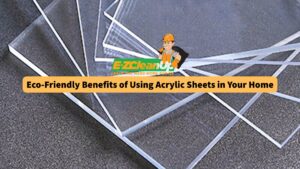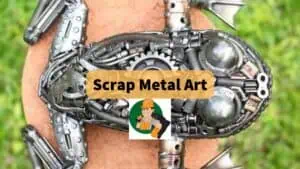Want a backyard that thrives on its own? A self-sufficient backyard lets you grow food, conserve resources, and even help reduce organic waste. From composting to rainwater harvesting, you can always turn your outdoor space into a productive, eco-friendly haven.
To learn more tips about how you can create a self-sufficient backyard, you can continue reading to find the setup that works for you best.
#1 Why You Should Start Your Own Self-Sufficient Backyard
A self-sufficient backyard gives you more than just fresh vegetables. But it can also give you control, peace of mind, and a deeper connection to your environment. Here’s why it’s worth starting:
- Grow Your Own Food – Skip the store and harvest straight from your garden. You’ll eat fresher, healthier meals and cut down on food costs.
- Reduce Waste – Composting kitchen scraps, collecting rainwater, and reusing materials help shrink your environmental footprint.
- Save Money Over Time – Once set up, your garden, energy sources, and water systems can lower monthly bills and reduce reliance on outside resources.
- Build Practical Skills – From growing tomatoes to fixing fences, you’ll gain hands-on knowledge that boosts confidence and self-reliance.
- Enjoy Peace and Purpose – Tending your backyard offers daily calm, a break from screens, and a sense of accomplishment as you watch your space thrive.
#2 What to Know Before You Start Your Self-Sufficient Backyard
Before you plant or build anything, it’s important to plan. Here’s what to think about to make your backyard truly self-sufficient and built to last.
1. Start with a Vision, Not Just a Garden
Many people rush to the garden center, fill a cart, and call it a start. But before you plant a single seed, ask yourself: What do I really want from this space?
- Do I want to grow my own food?
- Do I want a quiet escape?
- Do I want to use less electricity and water?
Self-sufficiency means different things to different people. It could be preserving vegetables for winter, installing solar panels, raising chickens, or collecting rainwater.
So, why not take a walk around your yard? And see where the sun hits, where the wind blows, and what’s already growing. Then sketch out your ideas. Build a backyard that fits your life—not just what looks good online.
2. Divide Your Backyard into Zones That Work for You
Organize your yard by how often you’ll use each area—a smart idea borrowed from permaculture. It helps you make the most of your space and your time.
- Zone 1 – Right by the house. Perfect for herbs, salad greens, or your daily compost drop-off.
- Zone 2 – A bit farther out. Great for raised veggie beds, chickens, or a small greenhouse.
- Zone 3 – Larger crops like pumpkins or corn, fruit trees, or even a mini food forest.
- Zone 4 – Less-tended areas for bees, firewood, or grazing animals.
- Zone 5 – A wild zone. Leave this mostly untouched to support local wildlife and healthy ecosystems.
3. Grow Foods That Give You More with Less Effort
Skip the fancy catalog plants and grow what really works. Choose crops that are easy to care for, grow well in your area, and keep your pantry full.
- Perennials – Asparagus, rhubarb, artichokes, and berries are yummy and healthy. You can plant them once and enjoy them for years.
- Quick growers – Grow some lettuce, kale, radishes, and bush beans. They’re fast, fresh, and reliable.
- Storage crops – Place potatoes, garlic, onions, and squash. These ones are perfect for stocking up.
- Protein sources – You can raise chickens for eggs or rabbits for meat, but only if you’re open to it.
- Medicinal herbs – Plant chamomile, mint, lavender, and comfrey to add some natural healing to your garden.
4. Water Smart, Not Hard
Water is often an afterthought. But it can make or break your backyard setup. Even the best soil won’t help if your plants are thirsty.
Start by collecting rainwater with barrels under every gutter. Just one 1,000 sq. ft. roof can catch over 20,000 liters a year! And then, use efficient watering methods like drip irrigation or olla pots to get water right to the roots with little waste.
In dry areas, mulch everything. Wood chips, straw, or even shredded cardboard help keep moisture in and shield your plants from heat and cold. These small changes can save gallons and also keep your garden thriving.
5. Ditch the Noisy Mower for a Simpler Way to Cut Grass
Forget the roar of gas mowers and the smell of fuel. A manual push mower gives you quiet, clean cuts, and even a chance to really connect with your yard.
No fumes, no cords, no oil changes. Just you, fresh air, and the steady rhythm of each push. You’ll start to notice the little things: a blooming flower, a bee at work, or a perfect spot for planting something new.
It’s not just better for the planet, but it’s also better for your peace of mind.
6. Compost Like a Chef, Not a Farmer
Compost isn’t just garden waste, but it’s the engine that powers your backyard. Try to treat it with care, like a recipe, not a dump pile.
Use a dual-bin setup: one for fresh scraps and one for compost that’s almost ready. You can turn it once a week and aim for a 2:1 mix of carbon (dry leaves, paper) to nitrogen (food scraps, grass).
Smells bad? Add more browns. Too dry? Add greens or a splash of water.
If you’re short on space, worm bins are a compact, low-odor solution that can make things better. Their castings are also nutrient-rich and perfect for feeding your garden, so no shovel is required.
7. Solar Power Isn’t Just for Roofs
You don’t need a full rooftop array to harness the sun. Because even a small solar setup can make a big difference in your backyard.
You can use a panel and portable generator to charge tools, light pathways, or run a pond pump. That’s real energy freedom without the big price tag.
8. Add Layers to Grow More in Less Space
A thriving backyard isn’t flat , but it’s built in layers, just like nature. And stacking plants vertically lets you grow more in every square foot.
- Canopy – You can plant tall trees like apples, pears, or walnuts.
- Understory – For smaller trees or big bushes, you can use lemon or fig.
- Shrubs – Berries, rosemary, or currants are perfect.
- Herbaceous – These ones are herbs, veggies, and flowering plants.
- Ground cover – You can plant a creeping thyme, clover, or strawberries.
- Root zone – Grow carrots, garlic, beets, and ginger.
- Vertical – You can cultivate some vines like beans, squash, or grapes.
#3 FAQs
How much space do I need to get started?
You don’t need acres. Even a small yard, patio, or balcony can support self-sufficiency with container gardens, compost bins, and vertical growing systems.
How do I deal with pests naturally?
To encourage beneficial insects, you can plant pest-repelling herbs like basil or marigold, and use physical barriers like row covers. Companion planting can also help deter unwanted bugs.
What tools are worth investing in first?
Start with hand tools: a good shovel, pruning shears, a trowel, and a sturdy garden fork. And you can always add more as your needs grow.
#4 The Bottom Line – The True Reward of a Self-Sufficient Backyard
A self-sufficient backyard isn’t built overnight, and it doesn’t have to be perfect. What matters is that you start. Whether it’s a single compost bin, a solar light, or one raised bed of greens, every action brings you closer to real independence.
This journey invites you to slow down, observe, and take pride in what you create. Over time, the small choices you make grow into something bigger: deeper roots, stronger habits, and a sense of peace that comes from living closer to the land.
Grow that. Nurture it. And let your backyard become not just a space—but a way of life.













